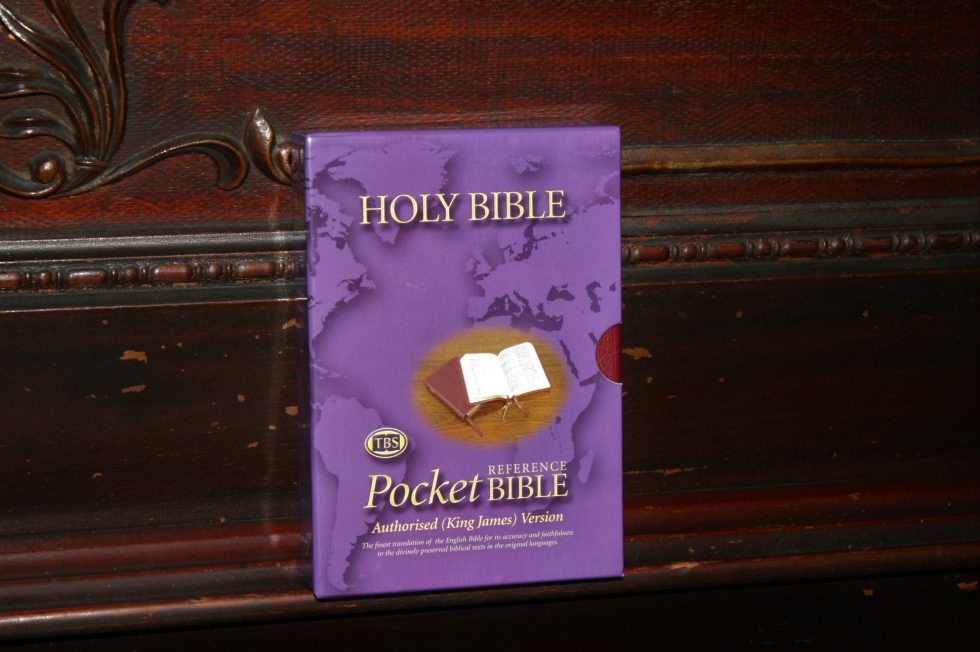
One of the easiest Bibles to carry around is a pocket size edition. Sometimes you need a pocket edition but you don’t want to sacrifice cross references or the Old Testament. Something like a Pitt Minion but smaller. The TBS Pocket Reference Bible is exactly that – the TBS version of the Cambridge Reduced Pitt Minion.
In this review I’m taking a look at the burgundy calfskin edition which has the customizations that you would expect from TBS. This edition was printed by World Wide Printing in Belarus.

Features
- KJV
- Calfskin cover
- Sewn binding
- Dark 5-point font
- Black letter
- Bible paper
- Pronunciation list
- Word list
- Reading plan
- 2 ribbons
- Head / tail bands
- Slip-case
- ISBN: 9781862282711
- Model 7U/R
Video Review
Binding
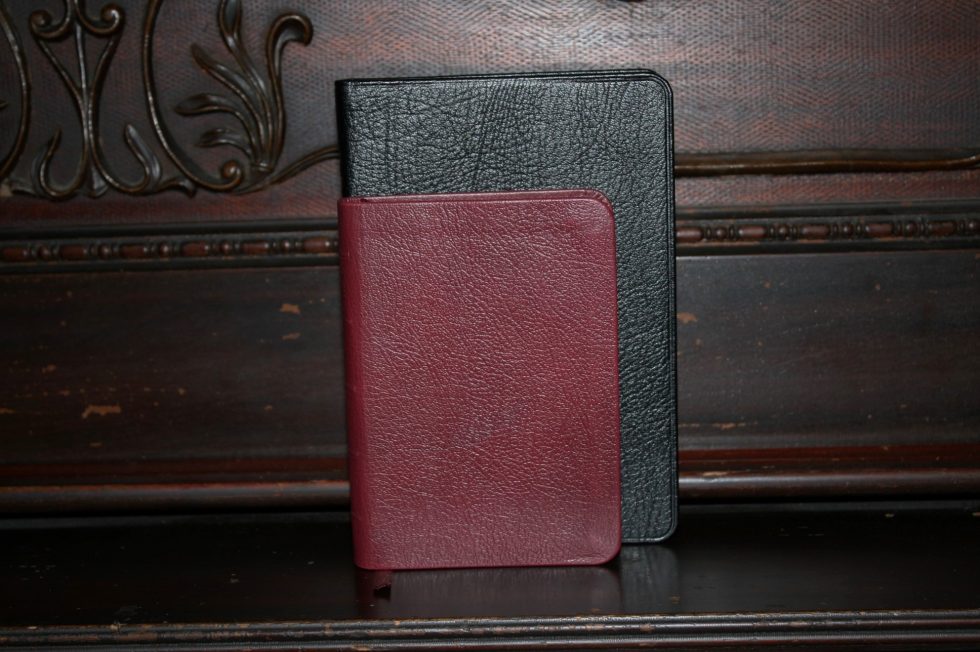 The cover is burgundy calfskin with a red vinyl paste-down liner. The grain is beautifully textured. The burgundy calfskin is soft and flexible but not floppy. Like all products from TBS it has a sewn binding. The spine includes embossed lines to indicate ribs. Holy Bible and the TBS logo are stamped in gold.
The cover is burgundy calfskin with a red vinyl paste-down liner. The grain is beautifully textured. The burgundy calfskin is soft and flexible but not floppy. Like all products from TBS it has a sewn binding. The spine includes embossed lines to indicate ribs. Holy Bible and the TBS logo are stamped in gold.
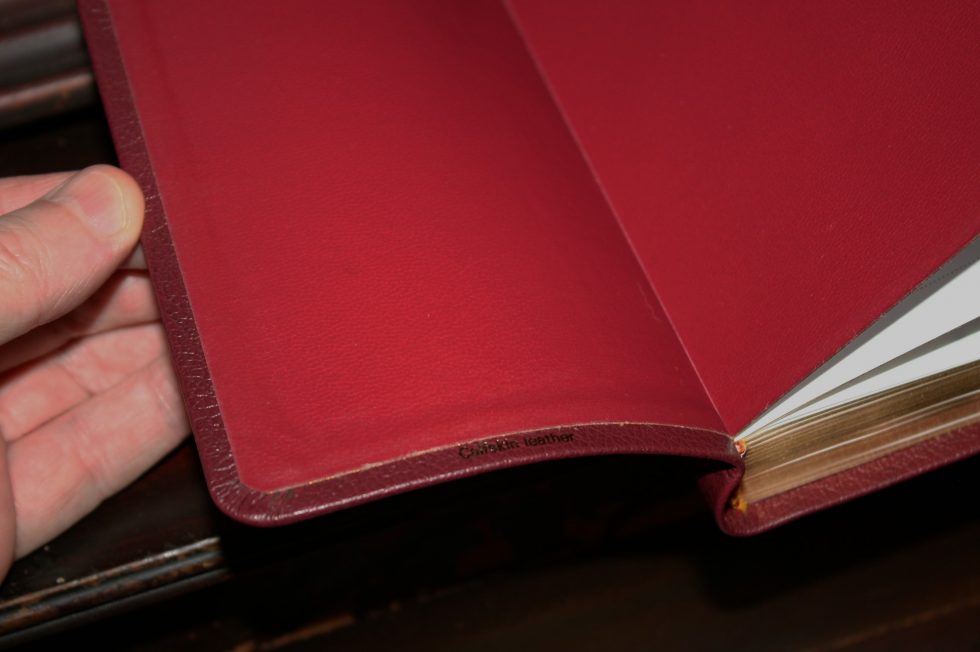
It’s too small to easily lay all the way open on a table on its own in Genesis but it doesn’t fight against you either. I prefer to hold small Bibles while reading, so I usually hold one side in one hand and the other side stays open, or I might fit it into the palm of my hand with my thumb and pinky holding the outer corners at the bottom. It’s so light I forget I’m holding it.
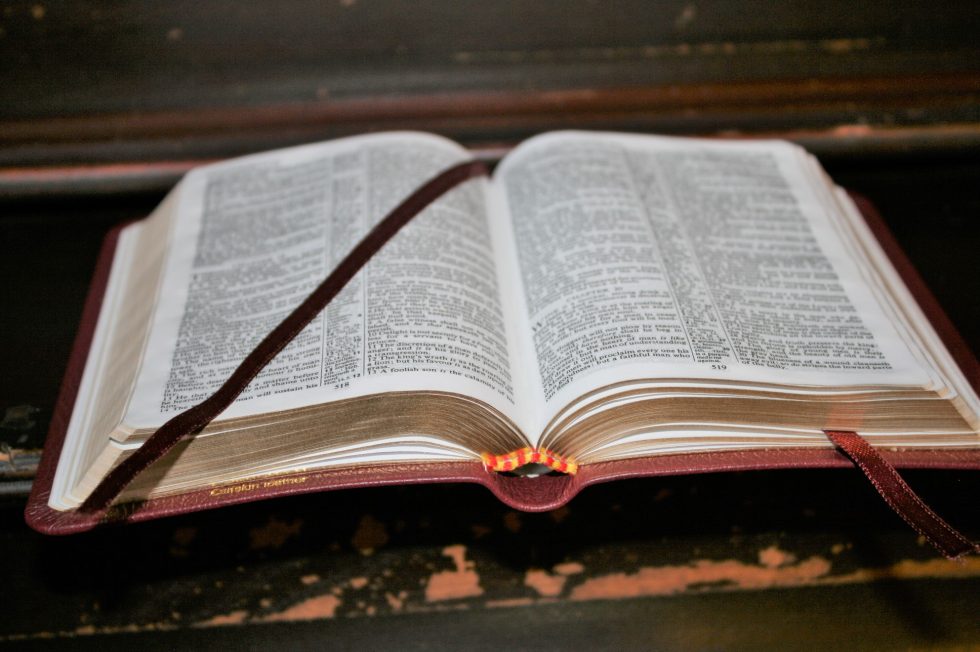
It has two burgundy ribbons and red and yellow head/tail bands. The overall size is 5.6 x 4.1 x .8”. The text-block is 5.25 x 3.5 x .75”.
Paper
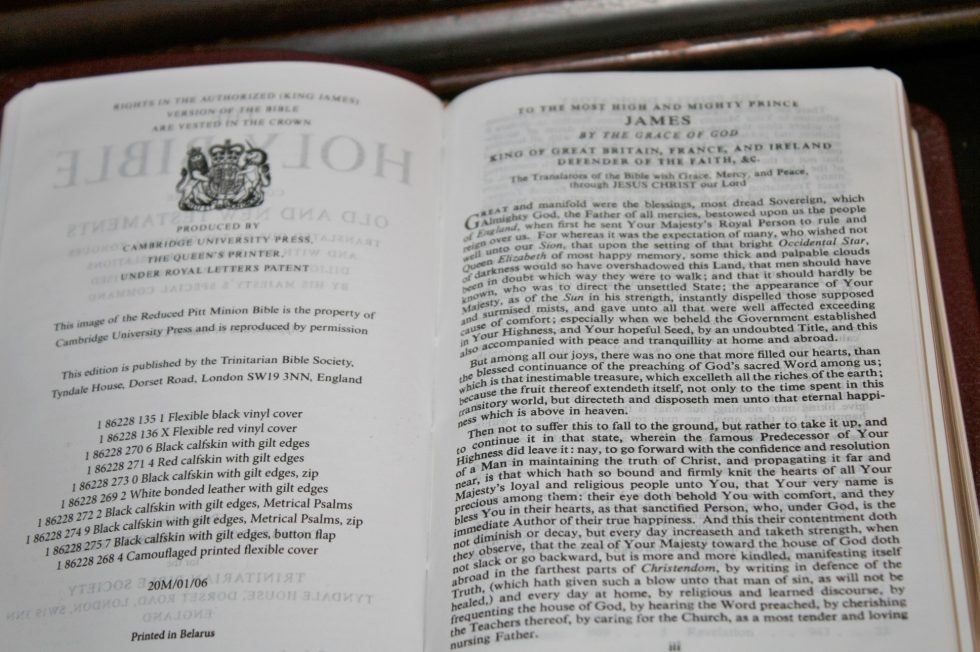
The paper is thin but still highly opaque. It’s ivory in color. Cambridge calls this “Bible paper”. I never had any issues with page curl or with turning the pages. It has gold gilt edges.
Typography
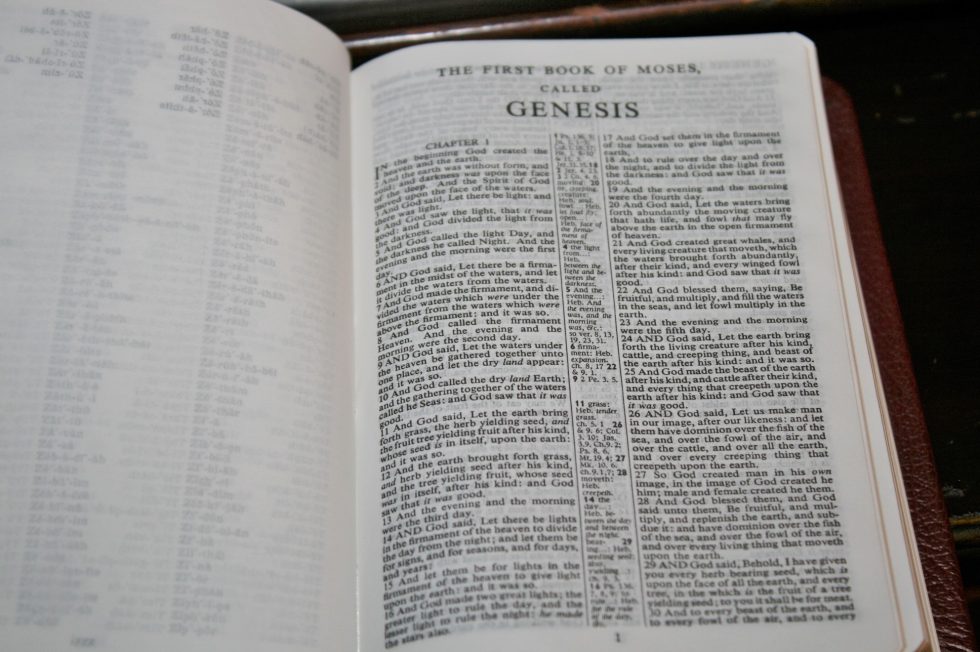
The layout is the typical KJV 2-column, verse by verse presentation. The header contains book names and chapter numbers in the outer corner. The inner margin shows summaries of each column. The page numbers are placed in the footer.
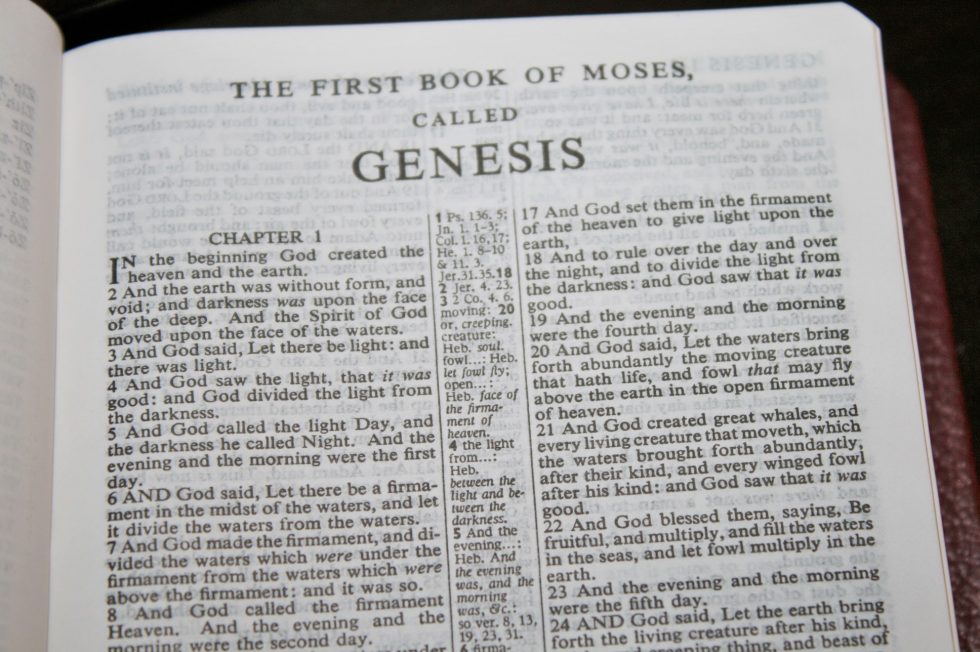
The font is 5-point. This is a small text, so if you have issues reading small print then this Bible isn’t for you. It’s in black letter with a dark print. The print quality does have some inconsistencies but it’s just noticeable. The darkness of the font helps make the small print readable.
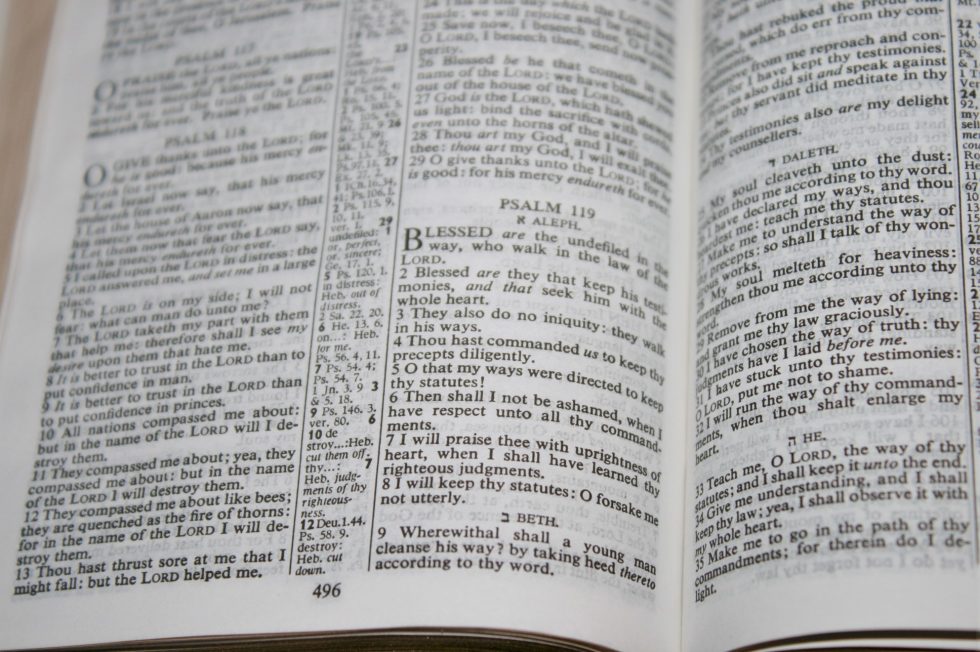
Italics are used to indicate supplied words (which I prefer). This isn’t a self-pronouncing text which helps keep the page clean. There are a lot of verses where the first word is in all-caps. These indicate paragraphs. They follow all the way through the end of the NT and match (at least everywhere I checked) with the 2nd generation Pitt Minion (a paragraph edition).
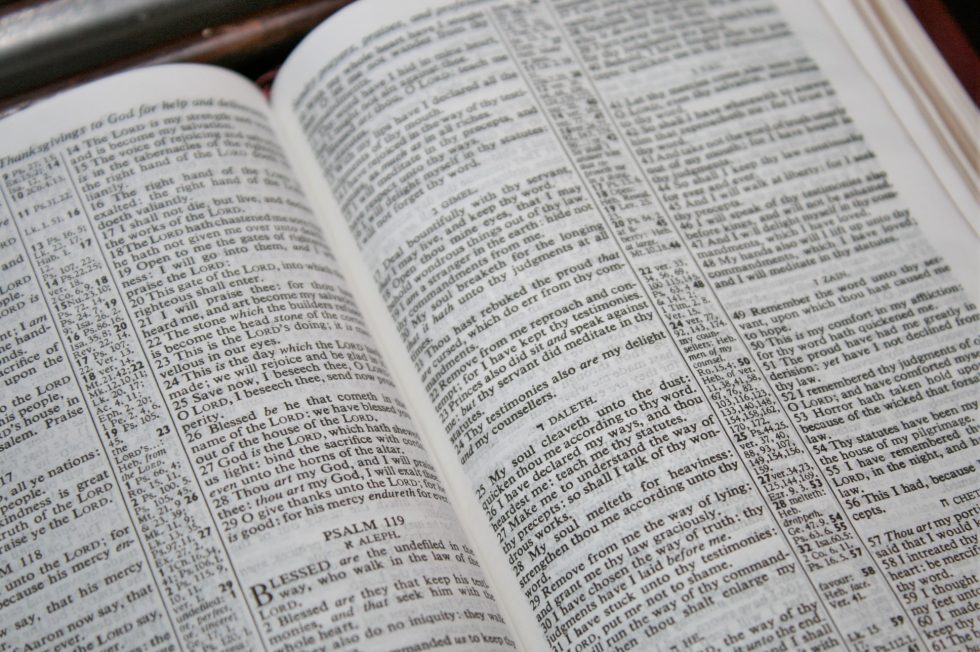
It uses the Bold Reference system to keep the text clean of distractions. This means the text doesn’t have letters and numbers keying it to the references or footnotes. This is my preferred method because I use the text often and only rarely look at the references and footnotes but they’re there when I want them. This makes the text far more readable and the tools are there when I want them. It is more difficult to know which portion of a verse a reference is for but that’s a tradeoff I’m willing to make.
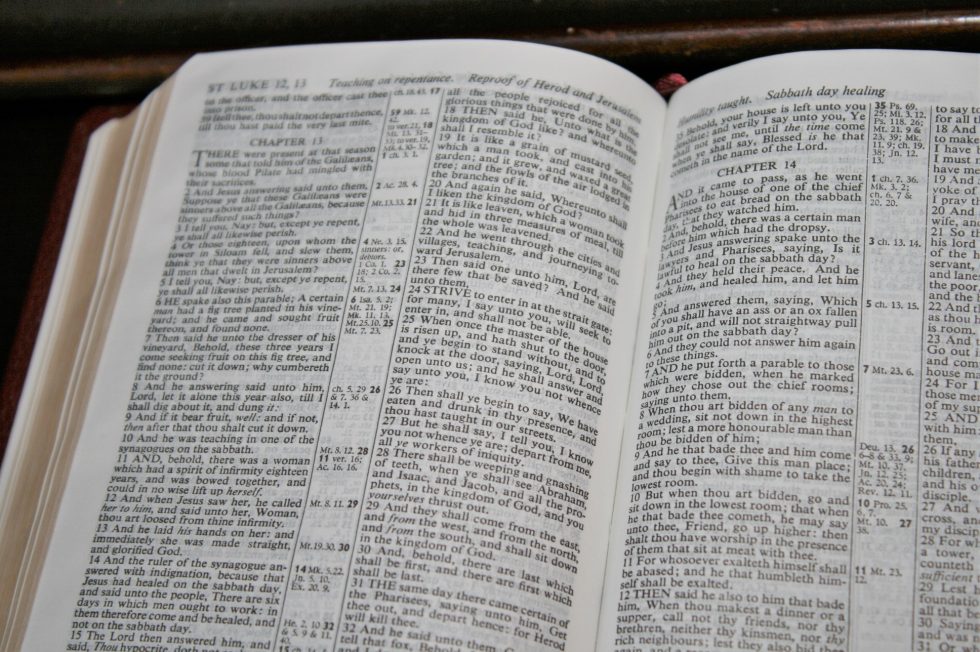
The inner margin is ¼”, which for the size of this Bible is large enough to bring the text out of the gutter. There are around 38 characters across with 7 words per line. The columns are 1.3” wide.
References and Footnotes
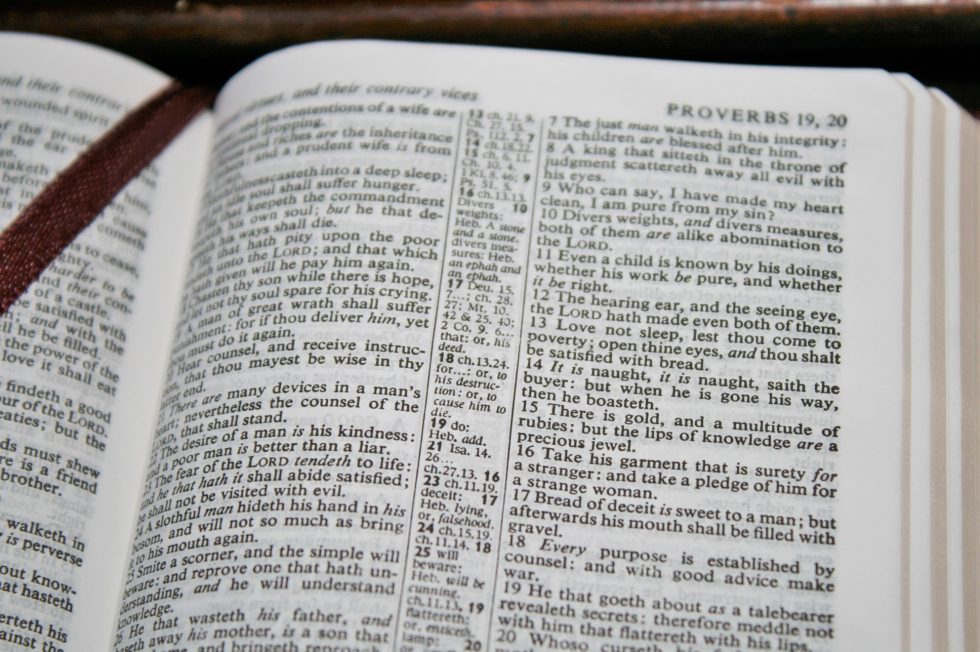
Cross references and the original translators’ footnotes utilize the Bold Reference System. This means they are placed in the center column near the verses they correspond to, with the verse number in bold and placed in the side of the column the verse appears, and there are no keys in the text. I like this because the text is clean of distractions and you don’t have to look too far to find them because they’re next to the verse.
I’m glad to see the footnotes are included because I consider them to be part of the translation. Footnotes include alternate renderings, information about Hebrew and Greek words, phrases, etc.
Here’s a short list of example references given to help you make comparisons and to give you an idea of the quality and number of references:
- Genesis 1:1 – Ps 136:5; Jn 1:1-3; Col 1:16, 17; Heb 1:8-10; & 11:3
- Deuteronomy 6:4 – Mk 12:29; Is 42:8; Jn 17:3; 1 Cor 8:4, 6
- Matthew 17:20 – ch 21:21; Mk 11:23; ch 13:31; ver 9
- Mark 11:23 – x
- Mark 12:29 – Dt 6:4, 5
- John 1:1 – Gen 1:1; ch 17:5; Col 1:17; 1 Jn 1:1; Rev 1:13; 1 Jn 1:2; Phil 2:6
- 1 John 1:1 – Jn 1:1; ch 2:13, 14; Rev 1:2; Jn 1:14; Lk 24:39; Jn 1:4
A List of Words With Their Pronunciation
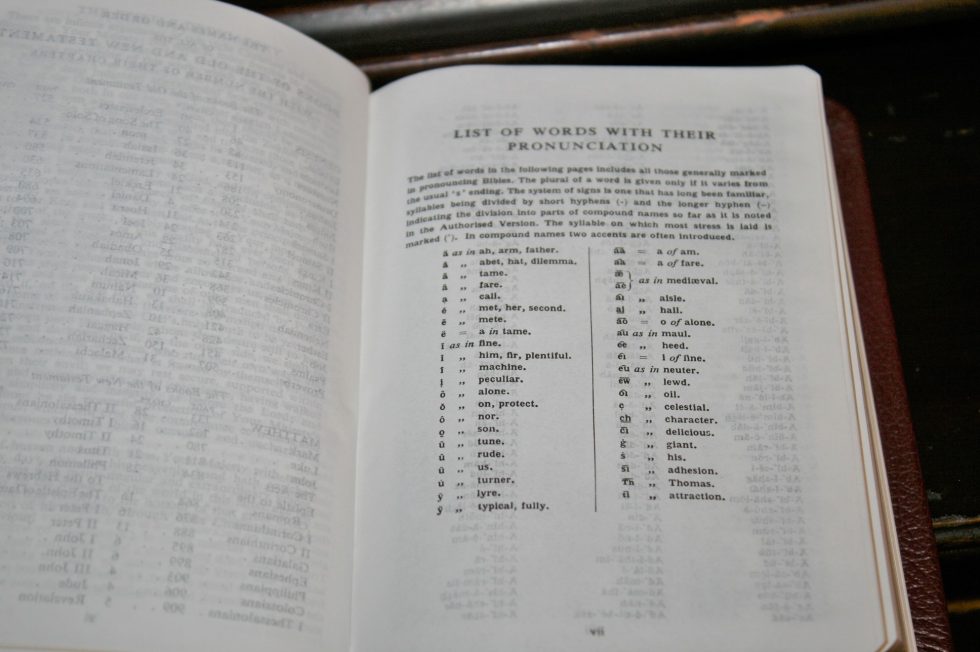
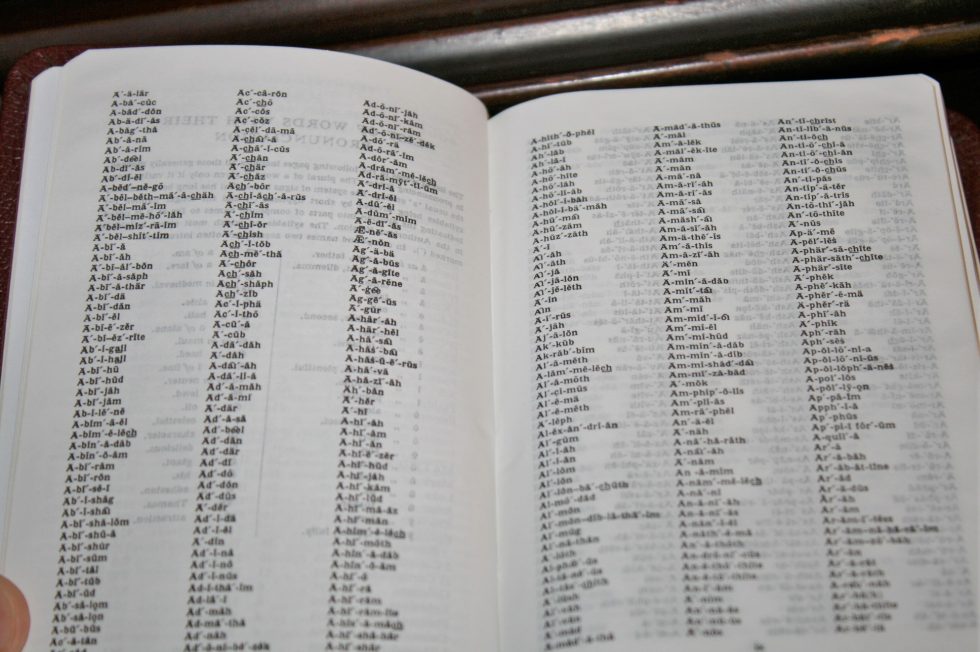
In the front is a list of words that usually have self-pronunciation marks. Instead of placing those marks within the text they are placed in this word-list along with a list of the symbols and how they are to be pronounced. This is the method that I prefer because it keeps the text clean but you still have a reference on how the words should be pronounced if you need it. At 5-point those marks would be too difficult to see in the text anyway, but in this list they’re printed at 6-point and they only have to be printed once.
A Bible Word List
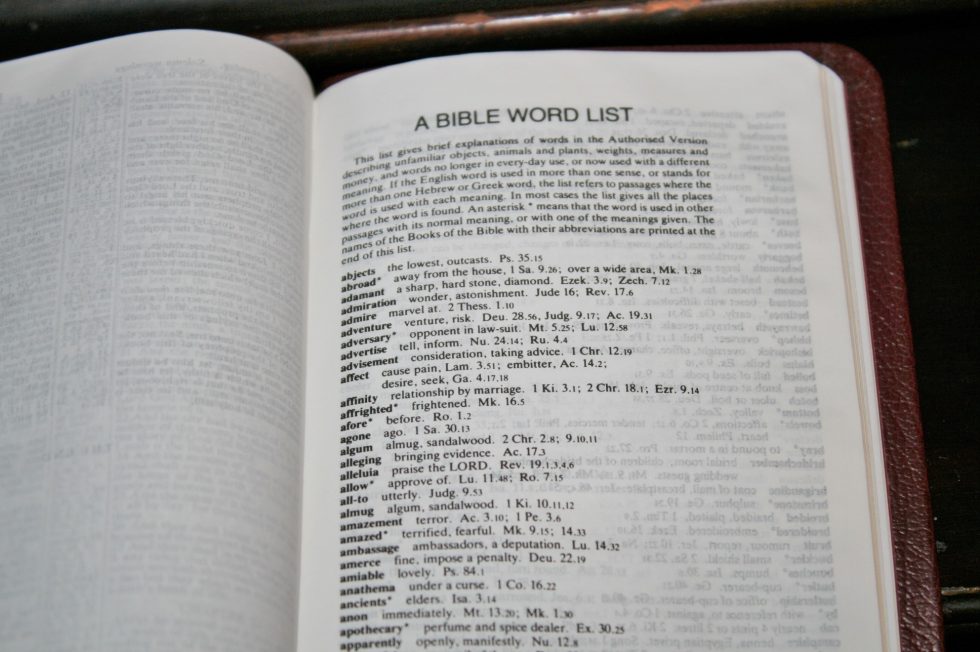
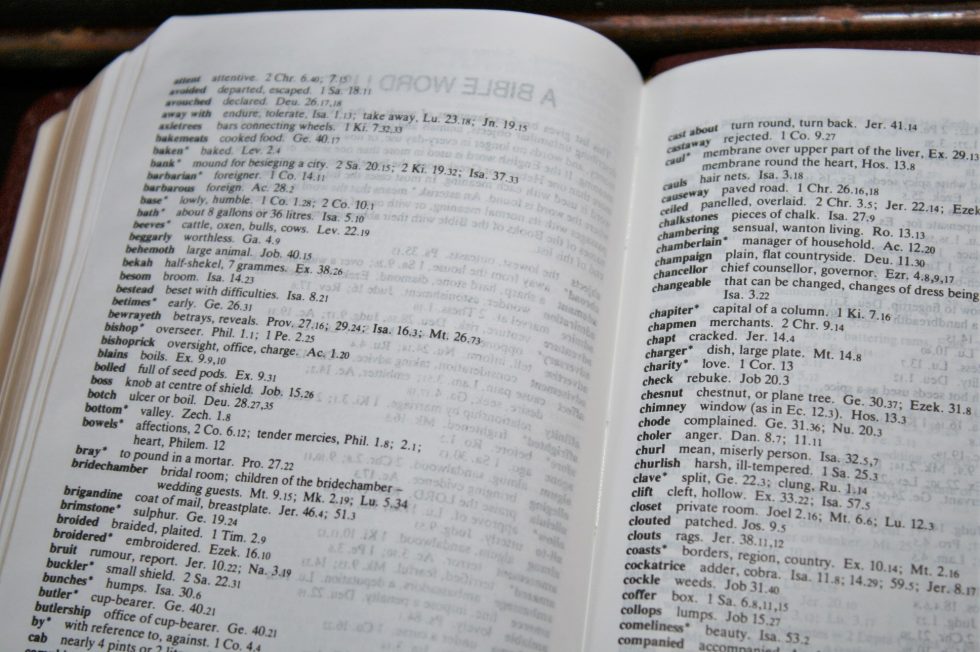
This is a 14 page list of words that have changed meaning or are no longer in use. The words describe objects, animals, plants, measures, and money. An asterisks shows if a word has multiple meanings. It also includes a list of abbreviations for all the books of the Bible. The words are shown in bold followed by the definition (or definitions if it has more than one meaning) and verses where the word is used. In my opinion this glossary should be included in every KJV.
Reading Plan
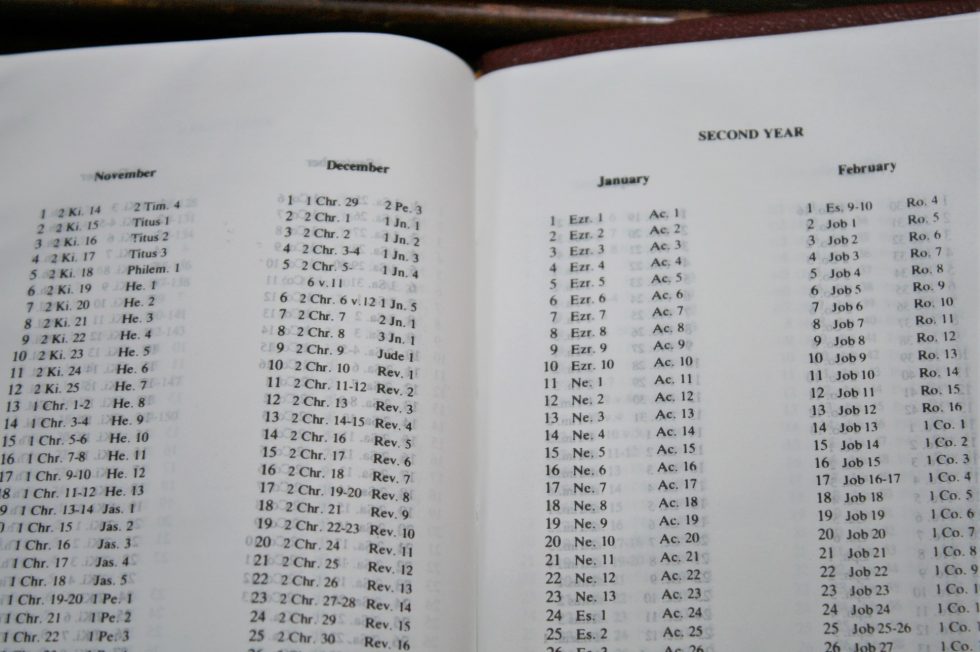
This is a two-year reading plan that takes you through the Old Testament once and the New Testament and Psalms twice. Each of the daily readings are from a different location in the Bible. For example, the first day has you reading Gen 1 and Mat 1, the second day is Gen 2 and Mat 2, and so on. You can read both years at the same time to finish the Bible in one year. This is the reading plan that we use in our nightly reading as a family and it’s worked great for us.
Other Pages
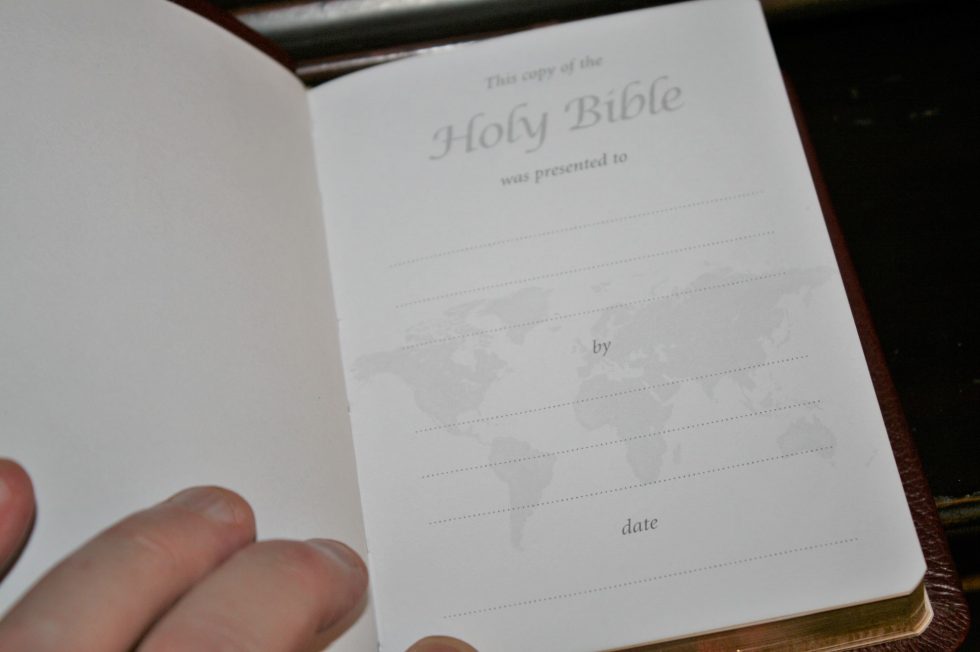
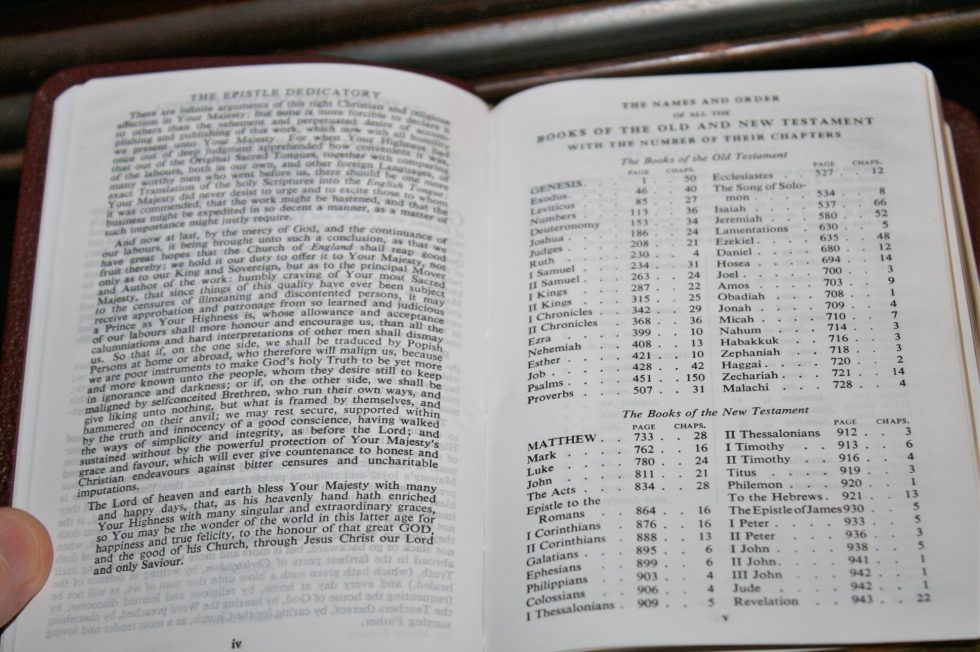
There are a few other pages included:
- Presentation page
- Epistle Dedicatory
- 10 thick end-sheets that can be used for notes
- Names and order of the books of the Bible with their page numbers and number of chapters
Using It
I used this Bible a lot for general carry and reading on the go. It can be difficult to read for long periods of time, but for a chapter here and there while sitting in a parking lot I had no problems reading it. It’s so light that I never wanted to put it down.
Comparisons
Since this is a reduced Pitt Minion I wanted to show how it compares to the current PM.

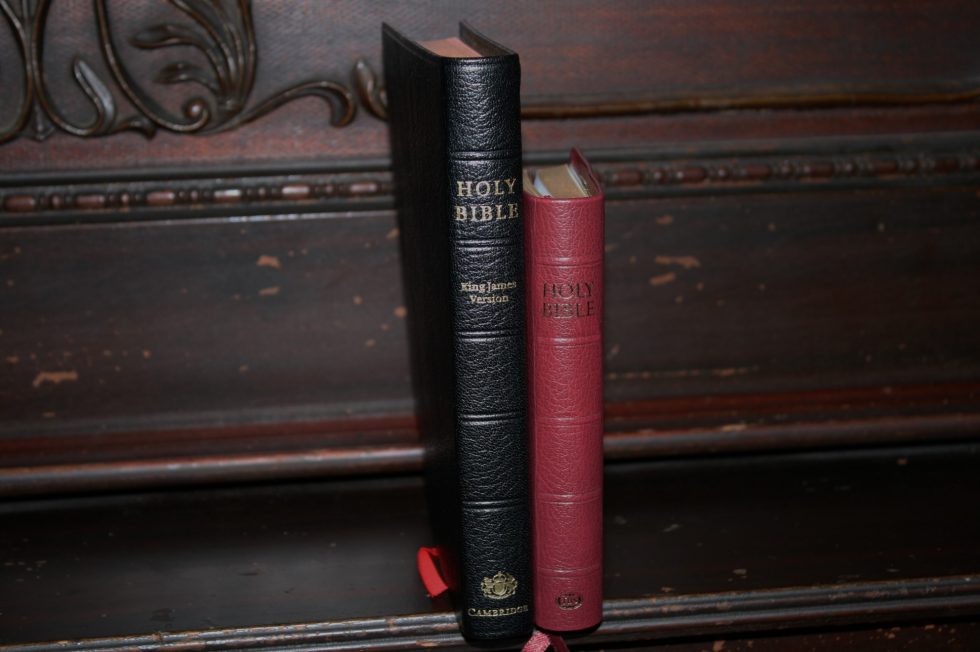
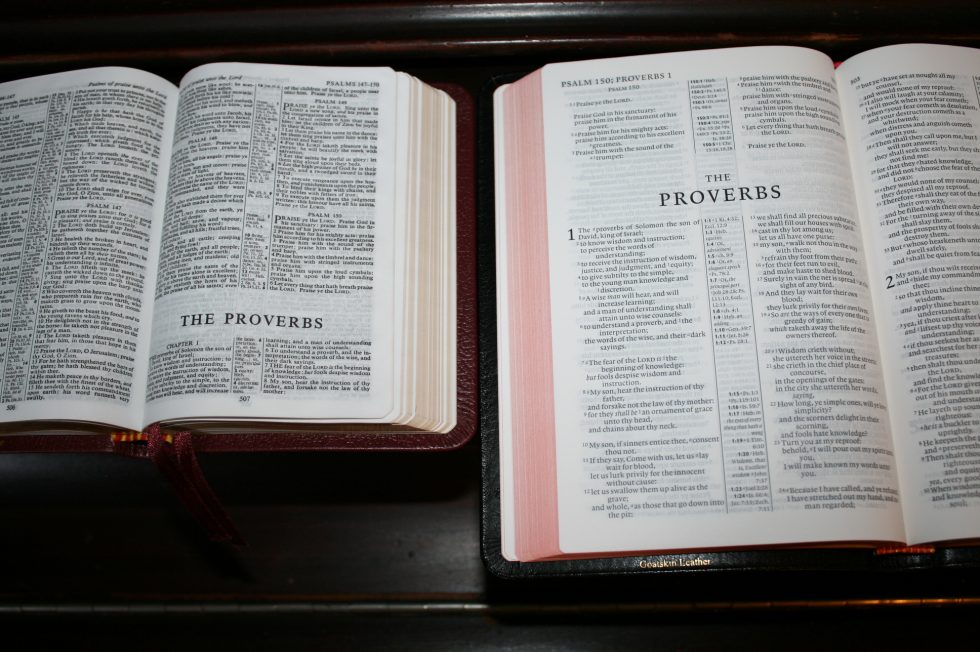
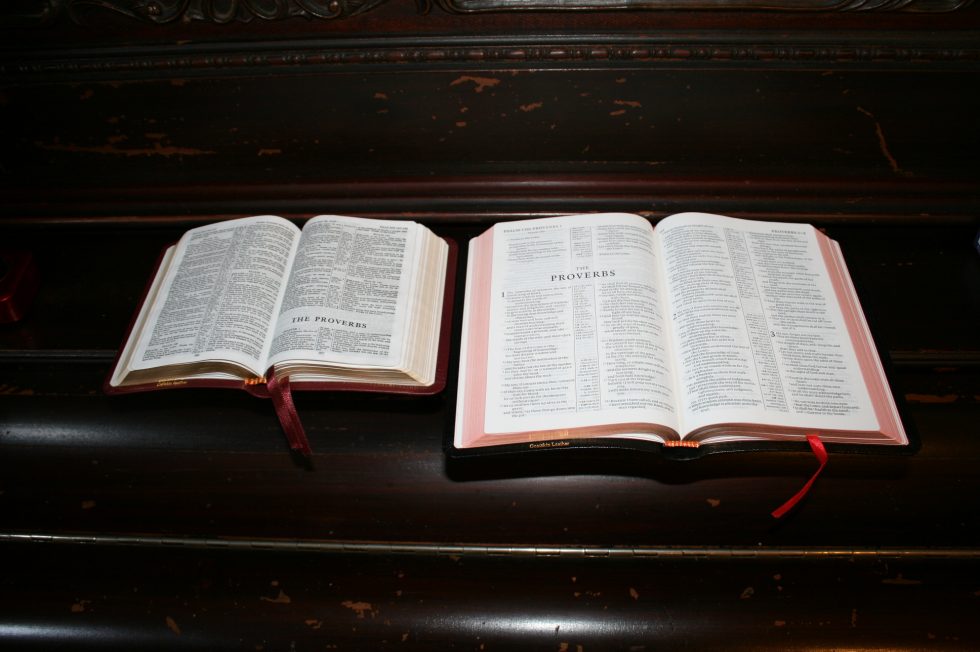
Conclusion
The TBS Pocket Reference Bible is a quality edition. The calfskin cover looks great and should last for many years. The paper was easy to handle and I never had any issues with show-through. The font is very small but dark and I could still read it with my bifocals. The two ribbons are great for keeping your place in the reading plan (this is especially helpful if you get behind).
Even though it doesn’t have maps or a concordance this is still an excellent reference Bible. They would have added to the size and wouldn’t have been used that often anyway. I’m glad to see the translators’ footnotes are included.
The primary purpose of this Bible is to carry it around with you and it will easily fit in a coat or pants pocket, or pocketbook (according to my wife). This is a fine Bible for reading and witnessing on the go.
Trinitarian Bible Society provided this Bible free for review. I was not required to give a positive review – only an honest review. My opinions are my own.




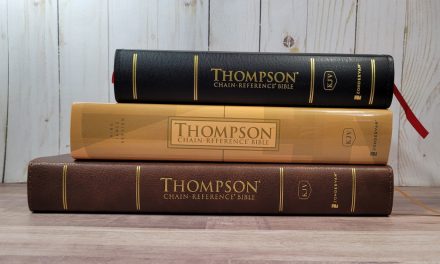





Thank you, a very thorough review.